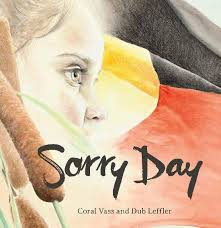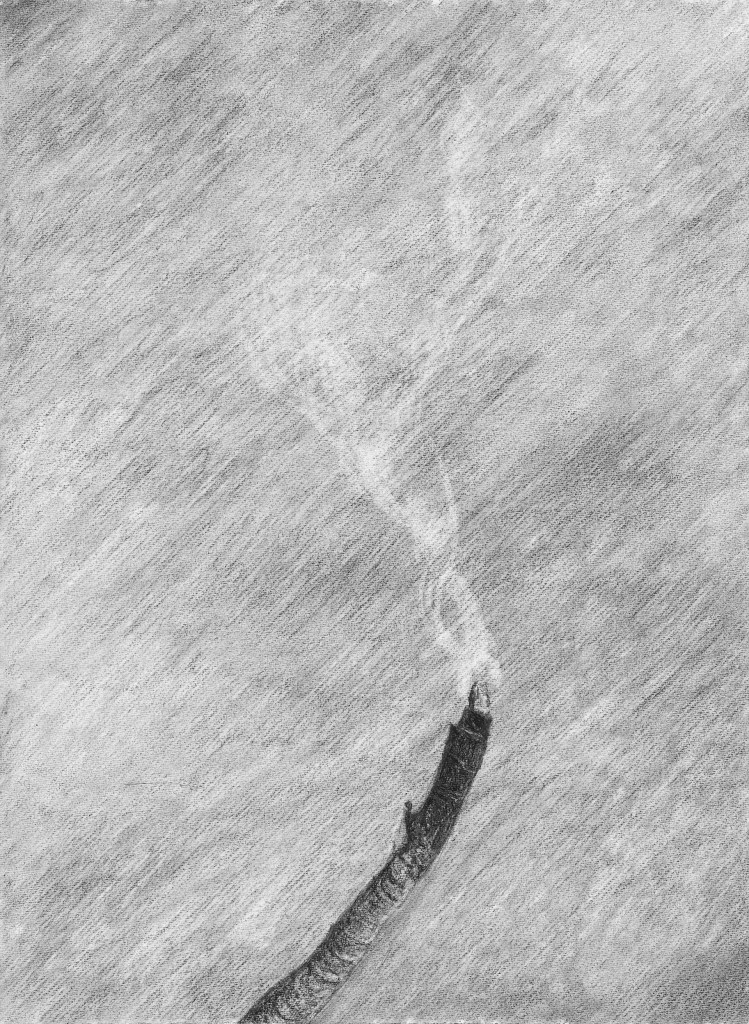“My cousins, Elsie, Omeo and I sit in these gatherings
by our parents’ sides,
the garrall on my shoulder.
Often, the Elders come to say wedayo to the budjan.” (Bindi)

Bindi (Magabala Books) is an enlightening verse novel by Gunai Woman and award-winning poet and writer Kirli Saunders. It is a lovely blend of appeal and lyricism and incorporates language so skilfully that young readers will understand the Gundungurra words.
It is the beginning of the school year but there is a change in the air for 11-year-old Bindi, the child in the middle of the family, an “empath of the land” and lover of art, horses and hockey. She cares for an injured garrall, faces bushfire and learns about listening, respect and caring for Country.

Bindi is illustrated by descendant of the Bigambul people, Dub Leffler, creator of one of my all-time favourite picture books, Once There Was a Boy. I have promoted Once There Was a Boy innumerable times with the highest of praise.
Here Dub speaks about Bindi and some of his other books.
Thank you for speaking to PaperbarkWords, Dub.
Where are you based and how are you involved in the children’s literature community?
Hi Joy, I’m based on The Central Coast in NSW-about an hour’s drive from Sydney. My part in the fantastic community of Children’s Literature is that of an Illustrator & occasional Author.

What is a career highlight so far?
Winning the Eve Pownall Award for CBCA Book Of the Year 2019 for Sorry Day was pretty special.
What was the connection and collaborative process between you and Kirli Saunders when working on Bindi?
I’ve met and done a few events with Kirli so luckily, I have a sense of her & her writing. As you may or may not know- Authors & Illustrators are often kept separate by the Publisher. Although, I would often send Kirli images of what I was working on during illustrating Bindi. I don’t send the writer everything however, just a taste of how I’m interpreting their text. And because Bindi has bushfires as a backdrop in the story- I could definitely relate to the text-due to the Central Coast having had many bushfires last summer. I think a lot of Australians will relate to Bindi in light of that.
With which part of the tale did you have a particular affinity?
Just the overall presence of the threat of bushfire in the story.
Where I live, on the Central Coast- it’s in a high fire zone and before I moved here, the place had been burnt out. In the last few years, you find yourself scanning the tree line and listening to the radio because come Summer, there is always the threat of bushfire. Last year, fires were burning around us all summer.
Were you invited to do a particular number of illustrations or could you do as many as you wished?
I was invited to do quite a few for Bindi- which I managed to squeeze in while illustrating another title. I live by the ethos of doing more than what’s asked of you- for example-if you ask me for a lettuce, I’m going to give you a whole garden. I like to give Publishers more illustrations than the bare minimum so they have more wriggle room when designing a book.
Why has the story begun with some of your illustrations leading into Kirli’s words?
You’d have to ask the graphic designer & Publisher this question- it works well doesn’t it. As an Illustrator, you have to be conscious of how the reader enters and exits in a story. The endpapers of a book are a great example of this- you basically sum up the whole story in one to two images and then go from there.

What media have you used for your illustrations? Why?
The media I used were Lead pencil and charcoal so as to help portray the path of fire and the aftermath it leaves when it goes. Like the story.
What motifs or symbols have you used?
Well, I used a twig that I set fire to and took photos of as reference. The twig is a type of clock throughout the book- showing the time before fire, during fire and after fire.

Of which illustration are you most proud/pleased and why?
I love the image on page 58 that begins the ‘Cinders’ chapter. The smoke reflects the lyrical nation of Kirli’s text.
You have illustrated the garrall, black cockatoo here in Bindi and also in Black Cockatoo by Carl Merrison and Hakea Hustler. Do you have an affinity with the black cockatoo, is it coincidence that you are invited to illustrate them or something else?
When I was in primary school, I wanted to be an Ornithologist – that is- someone that studies birds. If you look through my work over the years, you’ll find I try to sneak in an illustration of a bird into every one of my books.
What would you hope readers understand about First Nations People from this book?
Land management and acceptance of the power of nature not within our control.
Could you tell us about some of your other books?
Just this year, I’ve had three books come out that I illustrated – one, ‘Rocky and Louie’- also deals with how Aboriginal people react and deal with the Australian environment- including firestick farming. It was written by Raewyn Caisley & Phil Walley-Stack & is published by Penguin Random House.
Another one, called ‘Strangers On Country’-that came out around the same time- contains 5 true stories of new settlers to Australia- often the victims of shipwrecks on our shores, who lived with Aboriginal & Torres Strait peoples for many years. An important and yet overlooked part of early Australian history. It was an honour to work on such a book and help educate people on Australian history not widely known. It was written by Kirsty Murray & Dave Hartley & published by The National Library.
What are you working on now?
Among many other projects, (too many to mention) I’m actually illustrating another book written by Kirli Saunders called ‘Our Dreaming’ which will be out in 2022- and will be published by Scholastic.
What else are you reading and keen to recommend at the moment?
I’m reading quite a few books at the moment – ‘The Illustrated Encyclopedia of Dangerous Animals by Sami Bayly & a book called ‘Girl From the Sea’ by Margaret Wild & Jane Tanner.

How can your readers contact you?
I’m on Facebook and Instagram and they can also send me emails via bigambulboy@hotmail.com
Thank you very much for speaking about Bindi, Dub. You have a rare and important talent. All the best with this and your other work.
My pleasure, thank you for giving me the opportunity to speak about my work.

Wonderful!
LikeLiked by 1 person
Aren’t they great!
LikeLiked by 1 person